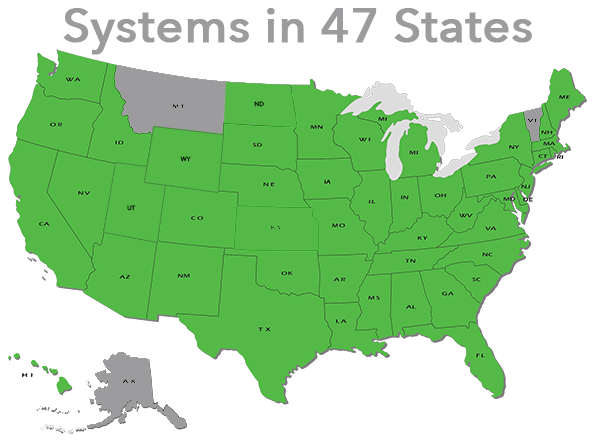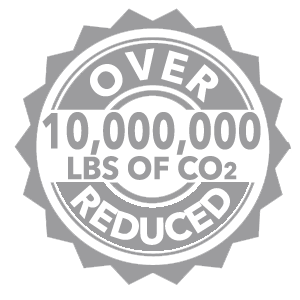How much U.S. electricity is generated from renewable energy?
Last Updated: April 14, 2014
U.S. power plants used renewable energy sources, including water (hydroelectric), wind, biomass wood and waste, geothermal, and solar, to generate about 13% of electricity produced in the United States during 2013.
Most renewable-generated electricity is from hydropower
The largest share of electricity generated by renewable sources in 2013 came from hydroelectric power (52%), followed by wind (32%), biomass wood (8%), biomass waste (4%), geothermal (3%), and solar (2%).
Electricity generation from renewable resources is primarily a function of generation capacity and the availability of the resource. The history of electricity generation has been different for each renewable energy source.
Nearly all hydroelectric capacity was built before the mid-1970s, and much of it is at dams that are operated by federal agencies. Biomass waste is mostly municipal solid waste that is burned in waste-to-energy power plants. Most electricity generation from wood biomass occurs at lumber and paper mills. These facilities use wood waste to provide much of their own steam and electricity needs. The amount of electricity generated by wind has increased substantially in the past decade. This increase is largely attributed to the availability of federal financial incentives and renewable portfolio standards mandated by state governments. Unlike other sources of renewable electricity generation, solar generated a significant amount of power at small-scale installations. According to the Annual Energy Outlook 2014, these small solar installations (often located on private rooftops) are estimated to generate 9.86 billion kilowatthours of electricity in 2013.1 The contribution of renewable energy sources to electricity generation in each state has evolved differently. See related articles — Today in Energy: February 20, 2014, September 23, 2013, December 11, 2013, December 2, 2013, May 2, 2012, and May 3, 2012The availability of renewable resources can vary
In some years hydroelectric generation increases, in others it declines. This variation is primarily because of changes in rainfall and melting snowfall in watersheds where hydroelectric dams are located. Like hydroelectric power, the electricity generation from wind and solar energy can fluctuate widely as a result of daily and seasonal patterns associated with these resources. Meanwhile, electricity generation levels from biomass (wood and waste) and geothermal energy are generally consistent because these resources are less prone to variability.
The United States is second worldwide in renewable electricity generation
China leads the world in total electricity generation from renewable sources because of recent additions to its hydroelectric capacity. China is followed closely by the United States, Brazil, and Canada. Although China leads in overall electricity generation from renewable sources, the United States produces the most electricity from non-hydroelectric renewable sources.
Why don't we use more renewable energy
There are two main reasons why we don't use more renewable energy sources to generate electricity:
Renewable technologies are often expensive. Renewable energy power plants can be more expensive to build and operate (in terms of dollars per unit of electricity output) than natural gas or coal-fired plants. Renewable resources are often geographically remote. Many renewable energy sources are available in remote areas, and building transmission lines to deliver the power they generate to large metropolitan areas is expensive.Certain policies aim to increase renewable energy use
There are three primary types of policies used to increase the use of renewable energy sources:
Tax credits. The Renewable Electricity Production Tax Credit, a federal incentive, has encouraged increased generation from wind and other eligible renewable sources. Targets. Many states have implemented Renewable Portfolio Standards (RPS). These standards require electricity providers to generate or acquire a certain portion of their power supplies from renewable sources. Many RPS programs have "escape clauses" if renewable generation exceeds a specific cost threshold. See related article — What are renewable portfolio standards and how do they affect generation of electricity from renewable sources? Markets. A number of states have built Renewable Energy Certificates/Credits (RECs) into their Renewable Portfolio Standards. These programs allow electricity providers to sell renewable energy certificates/credits. Some states have made REC markets mandatory. (Detailed information on federal and state renewable energy policies is available from the Database of State Incentives for Renewables & Efficiency.)Footnotes
1See Generation of Solar Photovoltaic under End-Use Sectors Appendix Table A16 of the Annual Energy Outlook 2014.
Learn More

Did you know?
Electricity generation from wind increased from about 6 billion kilowatthours in 2000 to roughly 168 billion kilowatthours in 2013. This advance was prompted by improved technologies, reduced cost of electricity production from wind, and government policies that support the use of renewable energy sources.




























